Click to view our Accessibility Statement or contact us with accessibility-related questions















Selecting Your First Mechanical Keyboard

search
close
Sort by: Newest
keyboard_arrow_down
AJGAMERX
15
Aug 30, 2023
Hey so I am new and I was thinking of buying the Akko MOD 007 prebuilt if you could help me out that would mean the world

The_Manic_Geek
426
Keyboard Club Member
Nov 1, 2023
AJGAMERXI personally prefer bright, full sounds above all else. Whether it's clacky, deep, ot some combination of that and other sounds depends on what I feel suits a board best based on experimentation. Still need to figure that out with V1, but for a board like Mode Envoy I REALLY like a full Nylon switch with a POM stem, double-shot ABS keycaps on the FR4 plate with case foam and the soft lattice blocks; it gives the board a really crispy quality to it with a bright, voluminous clack and minimal hollowness or ping, avoiding being either dulcet or shrill (lifeless or overly sharp).

CJ-duck
0
Aug 15, 2023
Help! Please? I've been trying to buy a mechanical keyboard for months. I've done endless research, tried a few boards, and dealt with useless customer service more times than I care to count, but now my brain is tired. I'm a hobbyist of other things and I'd really like to spend my time on those rather than this. I'm not a gamer. I'm just a humble MS Office worker with a photography habit, along with wrist and hand problems that I've been told may be helped by a programable mechanical keyboard (and mouse, but that's a whole other rage-inducing story). Pretty please, can one of you direct me to a site or person or store or some single source of information (IOW not a board with 97 different totally valid opinions) that can just tell me what to get, where to get it, and when it's going to be in stock? I even have a requirements list, so you/they aren't starting from scratch, and if it's not the right one, the only thing I'd ask is that you/they help me figure out what to try next.

The_Manic_Geek
426
Keyboard Club Member
Aug 15, 2023
CJ-duckI'm sorry to hear you've had a rough experience with custom keyboards so far. The issue with just telling someone what to buy and where to buy it is there's so many different preference-based aspects of this hobby, a quick answer is kinda tough since there's really not a "one size fits all" solution with keyboards. That said, if you like, post your requirements list and tell me some of the brands you've tried but aren't happy with. I can TRY to give you some recommendations.

flyingcod
1
Mar 7, 2023
Great article, I am a noob to custom keyboards but your details and advice really helped.
(Edited)
SummerRayneGrl
196
Keyboard Club Member
Dec 8, 2022
Excellent writeup! Took me 100 hours of YouTube to understand most of the details on those things when I was thinking of building my first keyboard. It is a nice reference tool for those getting into the hobby or just wanting to build their 1 special keyboard that goes with their PC build.

The_Manic_Geek
426
Keyboard Club Member
Dec 9, 2022
SummerRayneGrlExactly why I made this in the first place! The less time people need to spend figuring out WHAT to build, the more time they have to build and enjoy it. Thank you for the feedback, much appreciated!

The_Manic_Geek
426
Keyboard Club Member
Dec 7, 2022
Thank you for reading! I'll be posting more articles like this to help make sure your first keyboard experience is the best it possibly can be, or to at least refresh you on things if it's been a minute since you did a custom keyboard. If you have any questions or require a bit more clarity, please don't hesitate to ask!

SherwoodForest2
1
Dec 14, 2022
The_Manic_GeekOnce I figure out the elements that I want, what are the best ways to source and order what I am looking for?

The_Manic_Geek
426
Keyboard Club Member
Dec 15, 2022
SherwoodForest2Sometimes it's a matter of patience; trends will come and go out of vogue, even with in-stock boards, so there's a chance sourcing your specific board might take a minute. For instance, the likelihood of finding "that perfect O-ring mount, winkey-less, F-row-less TKL with a copper plate" might take a minute, but that's not to say it won't ever happen. Typically though, either through a group buy or a new in-stock option, the board may have several options for things like plate materials and colors. Nowadays there's even boards with multiple mounting options: Tofu Jr, a new 65% KBDfans has a pre-order for, has both gasket and top mount options, as well as four different plate options, which you select before adding everything to your cart all at once.
Past that you may be looking at custom work, potentially from someone like SM Keyboards, the folks who helped me make the sandwich mount keyboard I used for this article: I sourced the PCB myself, and SM sourced the plate file needed for him to get the custom plate cut, then we settled on pricing from there. It tends to beore expensive going that route, but at that point you're asking yourself the question, "How much is this all worth to me, and does this even make sense for my budget"? Things can get stupendous expensive REALLY fast, and for not a lot of tangible gain.
PRODUCTS YOU MAY LIKE
Trending Posts in Mechanical Keyboards

jdsvdropper
Drop ENTER keyboard with DCX Sleeper Mac variants and Rocky Bird
Black Drop ENTER keyboard with DCX Sleeper Mac variants for the Option and Command keys, and Rocky Bird red and black DCX keycaps.
Nov 19, 2024
AngryTank
Favorite Artisans
COME FORTH SHENRON!
Purple, Dragon Balls, and Seta! What more does a simple man need?
Nov 17, 2024
InsufferablePedant
ZealPC Aqua Zilents
Please ignore the filthy keyboard, it's been on a shelf for a minute.
Nov 15, 2024
Kyle-L
How to sell things on Drop & How Drop charge them?
Hi , this Kyle from China. Since a month ago, my team wanted to build a brand to produce the high quality of mechanical keyboard and headset to sell aboard. Now we already got the license to do so, and we can't wait to bring our products to meet everyone. But the products are still in the period of designing, it would take some time :( There are some questions we can't find the ways to solve - how to sell keyboard on Drop, and the details about how Drop charge per product? - Actually I sent an email to Drop Studio for some questions, but I didn't receive the answer.( Drop Studio also mentioned that they can contact me only if they were interested in my design / products ). So I'm here ask for help. If anyone can answer my question, I would really appreciate it :)
Nov 14, 2024

Neekolas714
Kicks & Keebs
Alpha Bravo Smoke
Finally finished my Keychron V5. Smooth, beautiful and stylish. What else could there be?
Nov 13, 2024




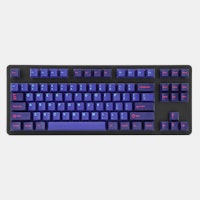
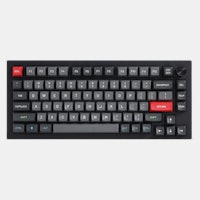
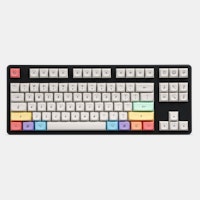
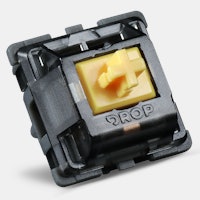

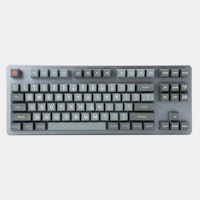
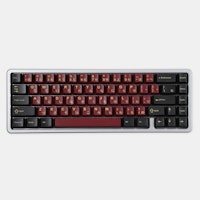
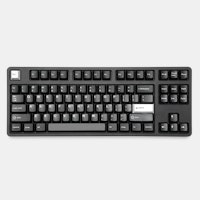
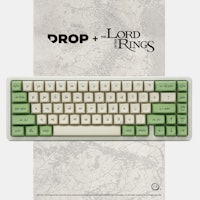








Socket Orientation
Remember: this hobby has a TREMENDOUS amount of options available at all price points, so what you end up with as your ideal board may not be what someone else ends up with, and that’s absolutely okay! That’s part of what makes this hobby so great in the first place! What other things do you consider when selecting your keyboards?